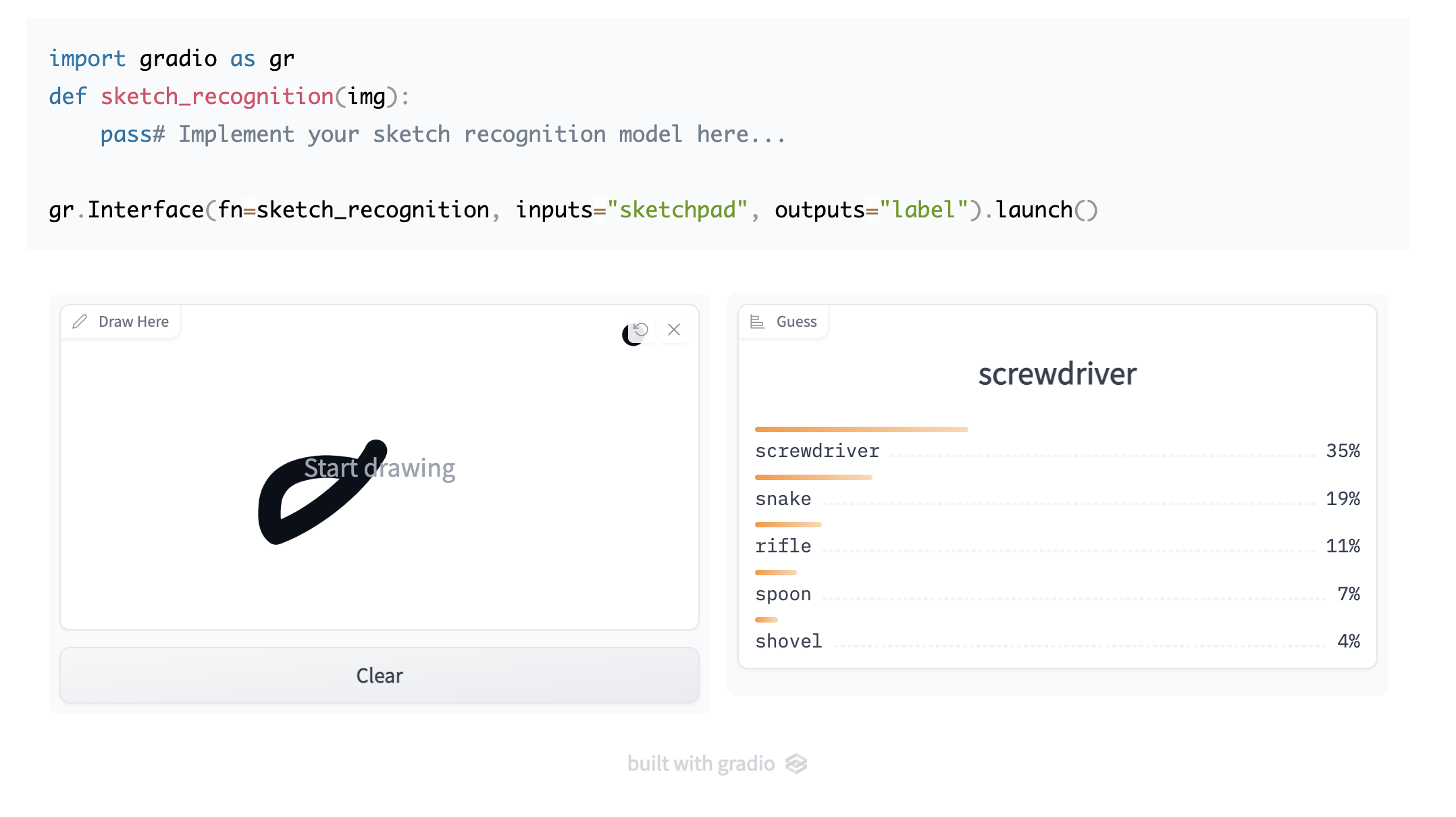Gradio: Creates Machine learning Web Apps in Python
Create UIs for your machine learning model in Python in 3 minutes
Table of Content
Gradio is an open-source Python library that is used to build machine learning and data science demos and web applications.

With Gradio, you can quickly create a beautiful user interface around your machine learning models or data science workflow and let people "try it out" by dragging-and-dropping in their own images, pasting text, recording their own voice, and interacting with your demo, all through the browser.
Gradio is useful for:
- Demoing your machine learning models for clients / collaborators / users / students
- Deploying your models quickly with automatic shareable links and getting feedback on model performance
- Debugging your model interactively during development using built-in manipulation and interpretation tools
Features
- A Dozen of built-in UI elements
- Supports images
- Real-time live interface
- Supports multiple inputs and outputs
- Built-in DataFrames and Graphs support
- Flagging option
- Supports CSV, Excel, TSV, JSON formats
- Control everything thru blocks
- Easy to share demos through Gardio.org
- Share and host your code on Hugging Face Spaces
Requirements
- Python 3.7+
Tech Stack
Gradio is built using:
- Python
- Sevlte
- Vite.js
- Tailwind CSS
- Python FastAPI
License
Gradio is released under the Apache-2.0 license.









